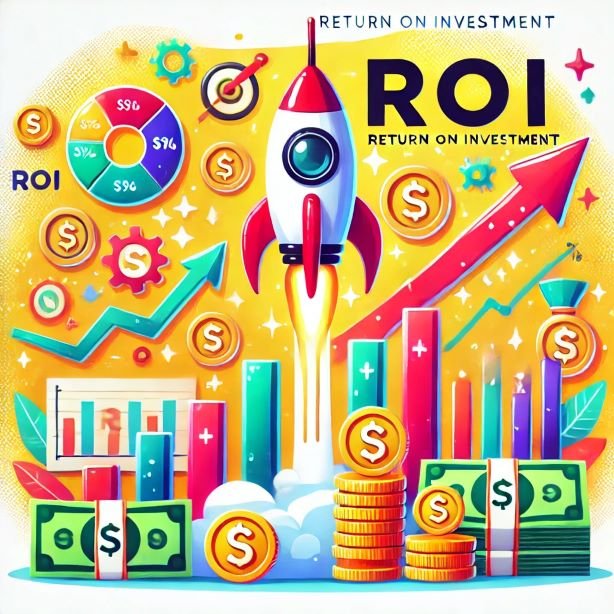Did you know that 71% of B2B decision-makers start their buying journey with a generic search? Demonstrating the true value of SEO investments can be challenging but, I’ve learned that proving SEO ROI isn’t just about tracking rankings – it’s about connecting SEO efforts to actual business outcomes. Let me show you how to build a framework for calculating and demonstrating your B2B SEO ROI.

Understanding the B2B SEO ROI Challenge
Measuring ROI is always a challenge in SEO and that is why most people like to show ranking and traffic improvements. They have their place, especially early in the process, but clients want data they can take to the C-level.
Common SEO ROI Challenges:
- Everyone wants a “Quick Win”, find that low hanging fruit that can be implemented and increase visibility right away. You might get lucky and find something, a broken Robots.txt file or a forgotten no-index in a section of the website, we can dream, right? The truth is, unless it is truly something that can make an impact right away, you should be careful on how you present it to your client.
- The B2B sales cycle length can stretch out over months. This extended timeline means you need to approach ROI calculation with a longer-term perspective. Many times, it will include multiple people within different positions at the company which also extends the process over many months. Pro Tip: Make sure you’re monitoring company interest through your lead capture and stitching the journey from interest to purchase. That IT Manager you brought in might have triggered the procurement executive 3 months down the line.
- Attribution modeling is perhaps the trickiest piece of the puzzle. In one particularly eye-opening case, we were severely undervaluing our SEO efforts because we were using a last-touch attribution model. When we switched to a position-based model that gave more credit to first-touch interactions (where SEO often plays a crucial role), we discovered that organic search was actually initiating 43% more revenue-generating journeys than we’d originally thought.
Pro tip: Don’t get too hung up on attribution perfection. Focus on consistent measurement methods that you can explain to stakeholders, rather than chasing the perfect attribution model. I’ve found success using what I call the “contribution framework” – tracking SEO’s impact across initial research, middle-funnel content consumption, and brand search volume growth. This approach has helped me maintain executive buy-in even during the long ramp-up periods that B2B SEO often requires.
Essential B2B SEO KPIs and Metrics
After years of presenting SEO results to C-suite executives, I’ve learned that throwing a bunch of ranking reports and traffic numbers at them doesn’t cut it. What really moves the needle is showing how organic search drives qualified pipeline – and I’ve developed a framework that consistently helps demonstrate this value.
Let’s start with the core traffic metrics, but with a twist. Instead of just tracking overall organic sessions (which can be misleading), I segment traffic by intent. For example, at my last agency, we created custom segments for awareness-intent, consideration-intent, and purchase-intent traffic. This approach helped us show that while overall organic traffic grew by 32%, high-intent traffic increased by 78% – a much more meaningful metric for stakeholders.
Lead quality is where things get really interesting. I learned this lesson the hard way when one of my enterprise SaaS clients was celebrating a huge spike in organic leads, only to discover that most were students looking for information for their thesis! Now, I implement a robust lead scoring system that considers:
- Page path before conversion
- Time spent on technical documentation
- Pricing page visits
- Company size indicators
- Industry relevance
One of my favorite metrics is the “pipeline velocity indicator.” It measures how quickly organic leads move through your sales pipeline compared to other channels. In my experience managing B2B campaigns, organic leads typically show 23% faster pipeline velocity than paid search leads – a stat that always gets attention in board meetings.
When it comes to Marketing Qualified Leads (MQLs), I’ve found success focusing on behavioral patterns rather than just form fills. For instance, we track users who consume three or more pieces of bottom-funnel content within 30 days. This approach helped one of my clients identify 47% more qualified prospects that their traditional form-based tracking had missed.
Calculating Direct SEO ROI
After years of refining ROI calculations for B2B clients, I’ve learned that the secret isn’t in complex formulas – it’s in knowing exactly which numbers matter and how to present them. Let me share my framework that’s helped justify millions in SEO investment across enterprise organizations.
First, let’s tackle the formula. While (Revenue – Investment) / Investment × 100 is the basic ROI calculation, B2B SEO requires a more nuanced approach. Here’s what I actually use:
[(Number of Organic Leads × Lead-to-Close Rate × Average Deal Value) – Total SEO Investment] / Total SEO Investment × 100
But here’s the crucial part most people miss – your total SEO investment needs to include:
- Content creation costs (internal or external)
- Technical SEO tools and platforms
- Development resources for implementations
- Team time allocation (yes, even if it’s internal)
Let me share a real example: Working with a SaaS client, we initially only counted their agency retainer as investment. After properly allocating internal resources and content costs, our true investment number was 2.3x higher – but guess what? We were still showing a 312% ROI over 12 months. Having this complete picture actually made our results more credible to the CFO.
For time period considerations, I’ve found that quarterly ROI calculations often paint the wrong picture in B2B. Given the longer sales cycles, I recommend using a rolling 12-month window with month-over-month pipeline contribution tracking. This approach helped me demonstrate value even when lead volume fluctuated seasonally.
Measuring Secondary SEO Benefits
Here’s something that took me years to fully appreciate some of SEO’s most valuable benefits don’t show up in your standard ROI calculations. Here is a framework for capturing these often-overlooked impacts that have helped me save multiple SEO programs from the budget chopping block.
Brand awareness impact is tricky to quantify, but I’ve found a reliable method. We track organic branded search volume trends alongside non-branded rankings. For instance, one of my clients saw a 67% increase in branded searches six months after we started ranking for high-value category terms. Using Google Search Console data, we could directly correlate generic search rankings with subsequent increases in branded searches.
Content asset value is my favorite “hidden” ROI metric. Think about it: that comprehensive buyer’s guide you created for SEO? It’s probably being used by your sales team, referenced in pitches, and shared in industry forums. I use a “content utilization score” – tracking how SEO content gets repurposed across channels. For one client, we found that their organic-focused resources were driving 43% of their sales team’s content sharing activities.
Competitive positioning delivers massive value that’s often missed in traditional ROI calculations. I create monthly share-of-voice reports comparing organic visibility for core commercial terms against key competitors. This helped one of my clients identify a gap in their product feature coverage that was causing them to miss out on high-intent traffic. After addressing it, they saw a 28% increase in demo requests.
Pro tip: Track how your organic content influences market perception. I set up Google Alerts and social monitoring for when our SEO-optimized content gets cited by industry publications or influencers. This earned media value often exceeds the original content investment several times over.
Creating Compelling ROI Reports
Different stakeholders need different stories. After countless quarterly reviews and board presentations, I’ve learned that the key to getting continued buy-in isn’t just about having good data – it’s about packaging it in a way that speaks to each audience’s specific concerns.
For presentations that require dollar-based outcomes, I use a “Financial Impact Framework.” Instead of leading with rankings or traffic, I start with pipeline contribution. One template that’s worked exceptionally well breaks down organic search contribution like this:
- Pipeline Influenced: $2.4M
- Pipeline Originated: $1.2M
- Closed Won Revenue: $800K
- Cost Savings vs. Paid Channels: $150K
Data visualization is crucial, but here’s the trick – less is more. I learned this lesson the hard way after losing a room full of executives with a 15-slide deep dive into keyword rankings. Now I use a simple one-page dashboard with four key metrics aligned with business objectives. For my SaaS clients, these typically include pipeline velocity, customer acquisition cost (CAC) comparison with other channels, organic-sourced revenue, and content ROI.
Here’s my proven quarterly review structure:
- Executive Summary (One slide with key wins)
- Progress Against Goals (YTD vs. Targets)
- Pipeline Impact (With MQL to SQL conversion trends)
- Forward-Looking Opportunities
- Resource Requirements
The secret sauce is in the forecasting. Using historical data and seasonal trends, I create conservative, moderate, and aggressive growth scenarios. This approach helped me secure a 40% budget increase for one client by showing the opportunity cost of underinvestment in SEO.
While calculating B2B SEO ROI requires careful consideration of multiple factors, a systematic approach using the right metrics and reporting frameworks can clearly demonstrate the value of your SEO investments. Focus on connecting SEO efforts to business outcomes, maintain consistent tracking, and regularly communicate results to stakeholders. Remember, the key is not just to measure, but to tell a compelling story with your data. To enhance your analysis, consider integrating additional data sources, such as customer feedback and conversion metrics, to paint a more holistic picture of your SEO performance. By aligning your insights with broader business objectives, you will not only showcase the impact of your efforts but also refine your b2b seo strategies for success. Ultimately, fostering a culture of transparency and collaboration around data-driven decision-making will empower your team to optimize and adapt your SEO initiatives for sustained growth.
I’m an SEO and performance marketing leader who loves breaking down complex strategies into clear, actionable insights. I have driven growth for reputable brands such as SAP, Four Seasons, BioMarin Pharmaceutical, and Rosewood Hotels in SEO and Performance Marketing strategy.

